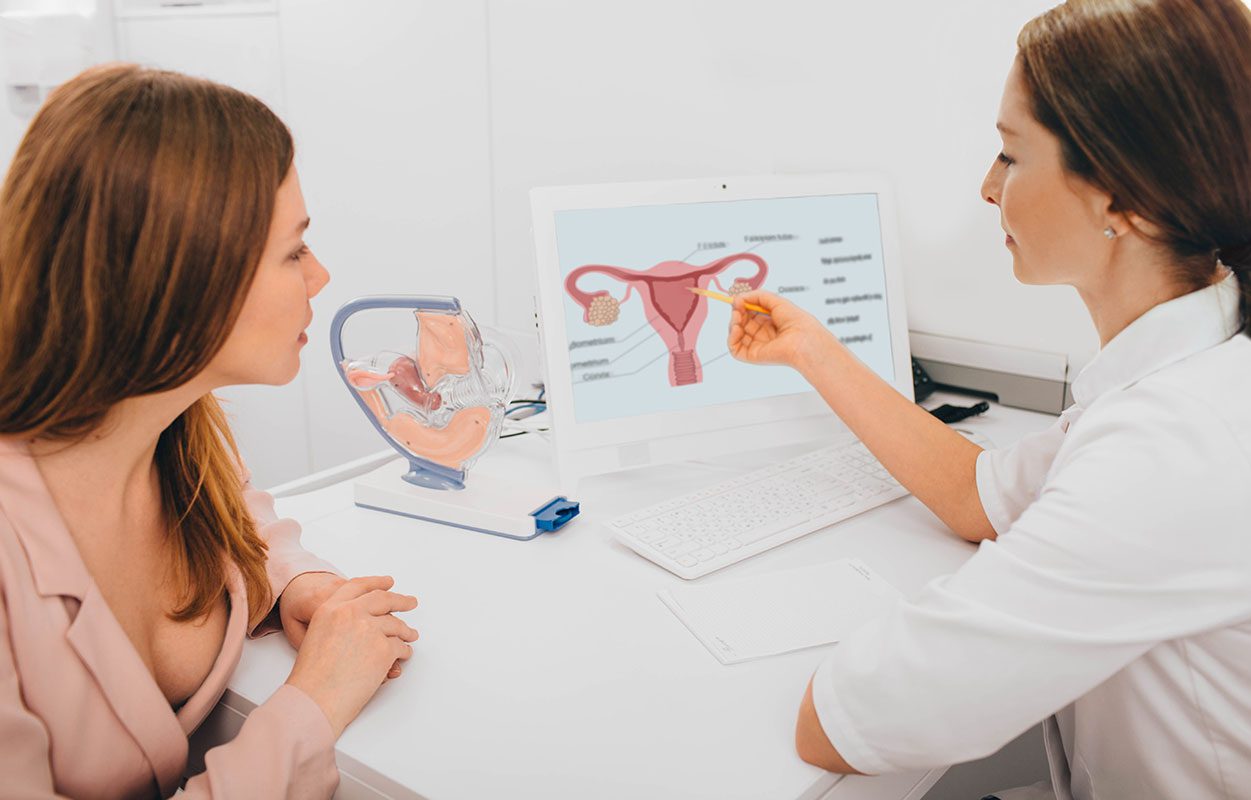Ovarian cancer diagnoses rates have fallen over the past 20 years but it’s still the most deadly cancer of the female reproductive system. It kills nearly 14,000 U.S. women annually and more than 21,000 women will receive a diagnosis this year.
Ovarian cancer doesn’t affect all age groups the same. Ovarian cancer is most common among women between the ages of 50 and 60; and it’s rare among women who are under 40.
Symptoms
Here are some of the most common signs and symptoms to look out for:
- Bloating
- Feeling full quickly or having trouble eating
- Pelvic and/or abdominal pain
- A frequent need to urinate
The American Cancer Society explains that these symptoms often appear for reasons aside from ovarian cancer. Be sure to watch for persistent symptoms that are outside of the norm for you. Other ovarian cancer symptoms include:
- Back pain
- Fatigue
- Sexual intercourse pain
- Abnormal vaginal bleeding (especially after menopause)
- Abnormal vaginal discharge
- Constipation
- Upset stomach
- Menstrual cycle changes.
Risk Factors
- Aging
- Being obese or overweight
- Having your first full-term pregnancy after age 35
- Never having a full-term pregnancy
- Having in vitro fertilization (IVF)
- Inherited gene mutations
- Taking estrogen after menopause
- A family history of ovarian cancer.
It’s important to understand that the presence of these risk factors doesn’t mean you’ll get the disease. These risk factors also don’t need to be present to get ovarian cancer.
Around 94% of early stage ovarian cancer patients live more than five years. However, only 20% of ovarian cancers are detected at an early stage. Ovarian cancer isn’t typically detected until it’s spread beyond the ovaries into the pelvis and abdomen.
Detection & Treatment
Some of the best ways to work toward early detection and treatment include:
- Yearly women’s health exams that include a pelvic exam
- Screening tests if you’re a high risk patient for this illness
- Seeing a doctor if you experience the signs and symptoms outlined above
- Discussing your risk factors with a physician (particularly if you have a family history of ovarian and/or breast cancer)
Treatment includes a combination of surgery to remove the cancer tissue and chemotherapy to kill or shrink the cancer. The specific treatment will varies person to person according to their illness and the stage at which it was detected.
If you would like to meet with a knowledgeable doctor, consider contacting Women’s Health Arizona. As Arizona’s largest ObGyn group, we’re trained and solely dedicated to delivering the best ObGyn experience in convenient and comfortable settings around Phoenix.

